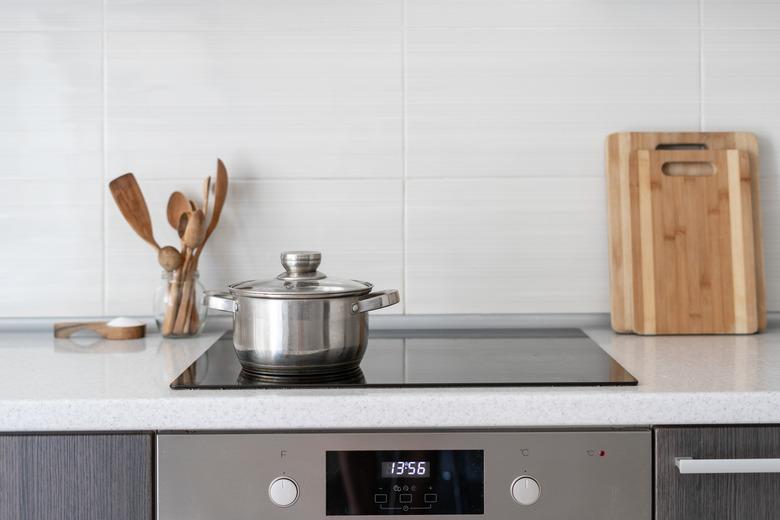What Is A Halogen Cooktop?
We may receive a commission on purchases made from links.
A halogen cooktop uses a halogen bulb to heat food instead of an electric coil or a gas flame. Its ease of use and ability to be quickly cleaned makes it a very popular kitchen stove option, but there are some things to consider before choosing it over a gas or electric cooktop. Serious cooks often opt for gas stoves, and electric stoves can be far less expensive in the long run.
Tip
A halogen cooktop uses a halogen bulb in combination with radiant heat to produce an instantly warm and stable temperature.
How a Halogen Cooktop Works
How a Halogen Cooktop Works
There are three ways that heat transfers from a heating element: convection, conduction and radiation. Convection is when heat is transferred via a liquid or gas (such as the hot air in an oven). Conduction is when heat is directly transferred from surface to surface (such as a pancake on a hot griddle). Radiation doesn't require any physical contact at all; the heat is transferred by electromagnetic waves in the same way that the sun heats the Earth.
Gas and electric cooktops rely on a combination of convection and conduction, whereas a halogen cooktop uses the radiation from a halogen bulb under a ceramic glass surface to heat food. These powerful bulbs are filled with a halogen gas like bromine or iodine to create radiant heat, which heats the ceramic glass. The food cooks as a result of both the conduction between the ceramic cooktop and the pot, and also the direct radiation from the bulb itself. The halogen bulbs last far longer than typical incandescent bulbs.
Comparison to Other Cooktops
Comparison to Other Cooktops
Gas cooktops are popular with serious cooks because they offer rapid temperature adjustment, while electric cooktops are often used because they are inexpensive and use a relatively safer fuel source. People who choose a halogen cooker do so because they offer the best of both worlds: a smooth, easy-to-clean surface and the ability to offer fast and consistent heat, according to GE.
Because there are no working parts exposed, a halogen stove is very easy to clean. After your halogen cooktop has cooled, simply spray it with a kitchen cleaner and wipe it down with a soft cloth. Also, they often come with indicator lights that notify you when the surface is too hot to touch, an added safety benefit.
Considerations for Halogen Stoves
Considerations for Halogen Stoves
Be sure the pots and pans you use match the recommendations of the manufacturer of your halogen cooktop. Some pans, such as those that are round-bottomed or of the incorrect size, may not work well with ceramic glass cooktops. Also, it is possible to break the glass top, which is difficult and expensive to replace, so proper care must be taken when working around this surface.
The halogen bulbs also need to be replaced every so often. According to the Lightbulb Company, halogen bulbs have an average lifespan of 2,000 to 4,000 hours of use. If you're not comfortable taking apart your stove top to access this light bulb, you may prefer a different cooktop style altogether.
